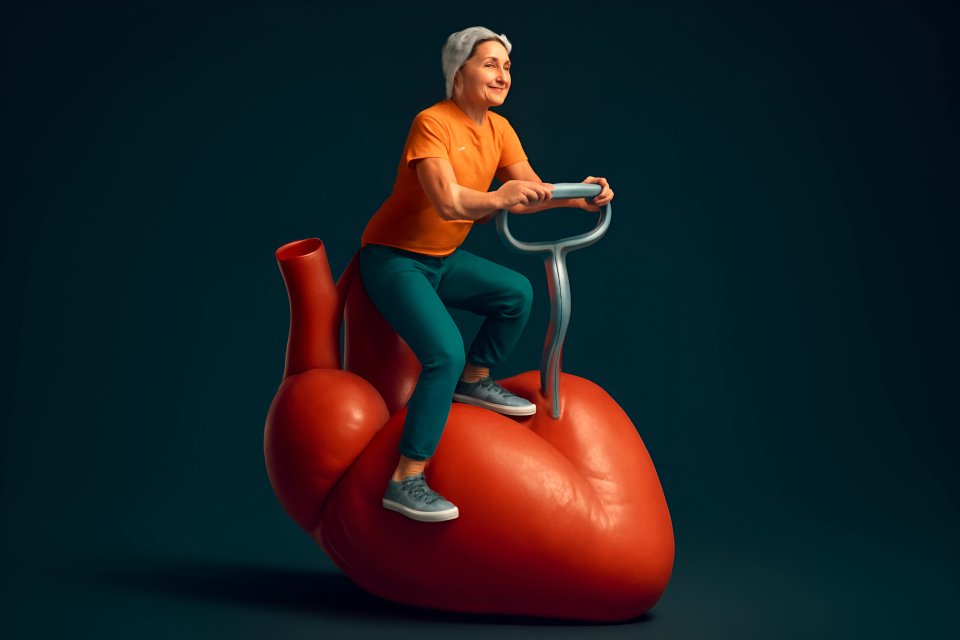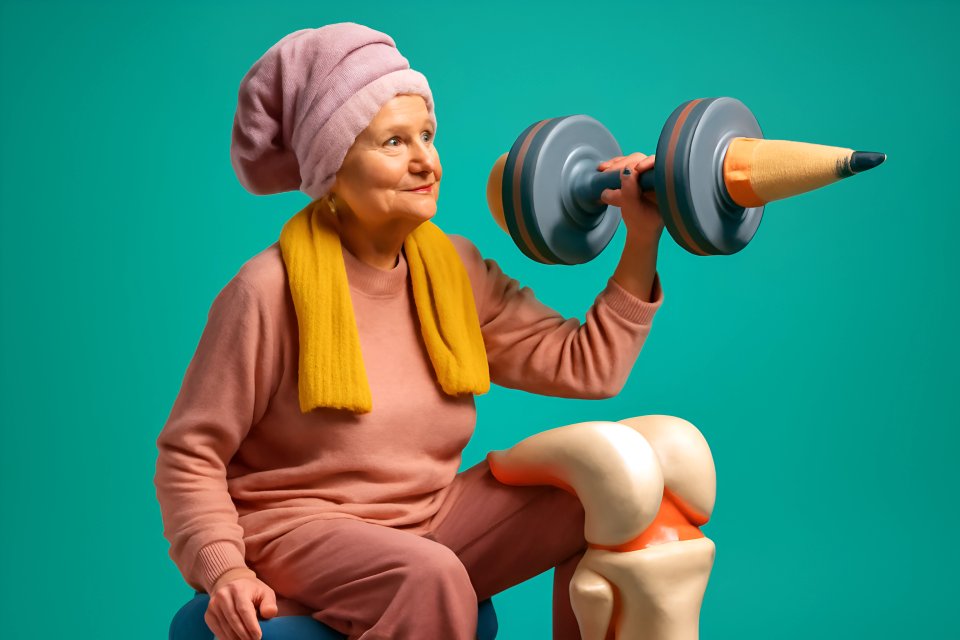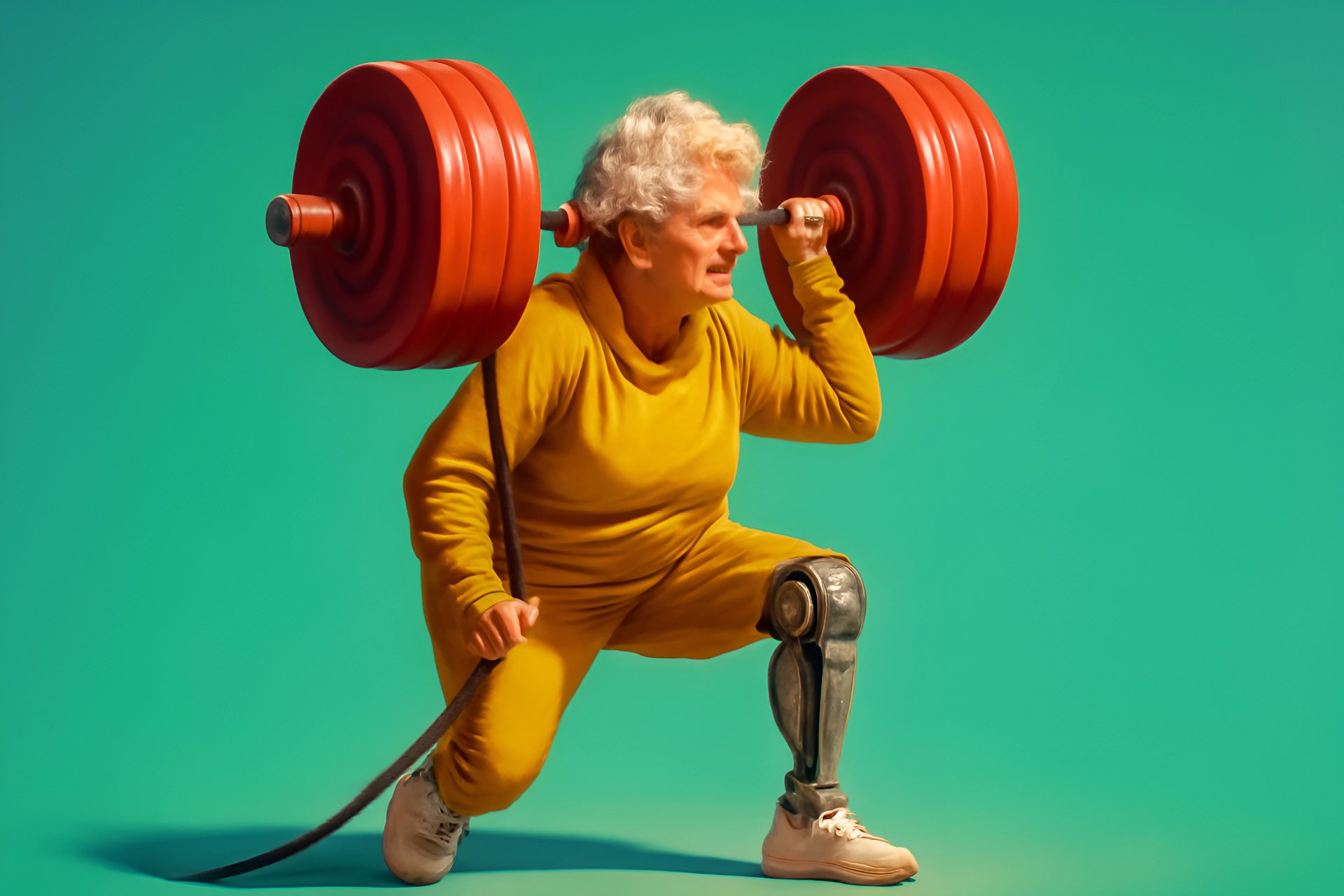
Introduction: Reclaiming Your Energy – It’s Simpler Than You Think!
Feeling a bit more sluggish lately? Wondering if your metabolism has hit the brakes now that you're sailing past 50? You're not alone in this; it's a common whisper among vibrant individuals who suddenly find their energy levels aren't what they used to be, a change that can impact your sense of vitality and everyday get-up-and-go.
But here’s the empowering truth: while it's true that our metabolism naturally shifts as we age, it's far from a lost cause. Think of it less like a switch flicked off and more like a dimmer that you still have control over, allowing you to influence your body's energy production and secure a more active future. You absolutely can reclaim that zest and vitality, ensuring your body supports your desire for a full and engaging life.
This isn't about chasing fleeting youth or embracing extreme, unsustainable measures that leave you feeling deprived. At FitOverFifty, we believe in smart, sustainable habits that weave seamlessly into your life, enhancing your well-being and approval of your own health journey. We're here to arm you with actionable, everyday strategies for boosting metabolism with daily activities after 50, helping you feel more energetic, stronger, and more vibrant for all the amazing years ahead.
Understanding Your Metabolism After 50: What’s Really Happening?
The Truth About Age-Related Metabolic Changes
So, what exactly is this "metabolism" we keep talking about, and why does it seem to change? In simple terms, your metabolism is the incredible, complex process your body uses to convert what you eat and drink into energy – the very fuel for life. It’s the engine that powers everything you do, from breathing and circulating blood to thinking clearly and moving your body with ease.
Now, after 50, several key factors can influence this internal engine. One significant player is sarcopenia, which is the natural, age-related loss of muscle mass; research indicates that muscle loss can begin around age 30 and accelerate after 50. Since muscle burns more calories than fat, even when you're resting, losing muscle means your engine idles a bit lower, potentially leading to a natural slowdown that can mean your body burns between 20 to 53 fewer calories daily per decade if proactive steps aren't taken. Hormonal shifts, a natural part of aging for both men and women, can also subtly alter how your body uses and stores energy, sometimes influencing fat distribution and overall energy levels.
Often, as life evolves, our overall activity levels might decrease, perhaps due to changing routines or physical discomfort, further contributing to a slower metabolic rate. But here’s the crucial takeaway, the spark of good news: understanding these age-related metabolic changes isn't about feeling defeated; it's about gaining power and control. Knowing what's happening under the hood allows us to target our efforts effectively and make informed choices to keep that engine humming, ensuring our survival and thriving in these vibrant years.
Firing Up Your Engine: Daily Activities to Boost Metabolism
The Power of NEAT (Non-Exercise Activity Thermogenesis) in Your Daily Routine
Ready to discover a secret weapon in your metabolic arsenal, one that doesn't require gym memberships or complicated routines? It’s called NEAT, or Non-Exercise Activity Thermogenesis, and it’s a genuine game-changer for anyone looking to enhance their metabolic health. NEAT refers to all the calories you burn from activities that aren't formal exercise, eating, or sleeping – think fidgeting, walking to the mailbox, taking the stairs, or even standing instead of sitting. Studies suggest NEAT can account for a significant portion of your daily caloric burn, making it a highly adjustable and accessible lever for your metabolism.
Let's put a FitOverFifty spin on this, making it practical and enjoyable. How about setting a gentle reminder on your phone to stand up and stretch every hour, or choosing to stand during those longer phone calls with loved ones? When you're pondering a problem or planning your day, why not pace a little in your living room? Embrace "active chores" with gusto: make gardening a full-body movement session, put some power and intention into your vacuuming, or consciously engage your core and arm muscles when carrying groceries – every little bit counts towards a more active you.
And those seemingly small choices? They add up to big results. Park a bit further away when you head to the shops (taking the scenic route, literally!), and opt for the stairs instead of the elevator when it’s safe and comfortable for you – view it as a mini-challenge that benefits your body. Even fidgeting with purpose, like tapping your feet under the table or doing gentle shoulder rolls while watching television, contributes to your NEAT. These simple additions to your daily routines for metabolism boost can make a surprisingly significant difference without ever feeling like a strenuous workout.
Integrating Short Bursts of Intentional Movement
Beyond the everyday magic of NEAT, strategically weaving in short bursts of intentional movement can further stoke your metabolic fire, keeping your energy levels more consistent throughout the day. Imagine starting your day not with a jolt of caffeine, but with a gentle wake-up call for your body – perhaps some light stretches by your bed or a brisk 5-minute walk around your garden to greet the morning. This isn't about grueling workouts that leave you exhausted; it's about consistently nudging your body into an active state, fostering a sense of well-being from the moment you wake.
Consider a "lunchtime energizer": after your midday meal, a quick 10-15 minute walk can do wonders for your digestion and help prevent that afternoon slump, boosting your mental clarity too. As evening approaches, a relaxing stroll through your neighborhood or some light yoga can help you wind down while keeping your metabolism gently engaged. This approach aligns perfectly with creating sustainable low-impact exercise routines that feel good and become a cherished part of your day.
Then there's the brilliant concept of exercise snacking. This involves short, 5-10 minute bouts of simple bodyweight exercises sprinkled throughout your day – think a few chair squats while the kettle boils, some wall push-ups during a TV commercial break, or calf raises while you brush your teeth. In fact, studies show that adults over 50 who consistently engage in 'exercise snacking' – these 1-2 minute bursts of higher-intensity movement – can elevate their resting metabolic rate by 5-9% within just eight weeks. The FitOverFifty tip here is golden: focus on consistency over intensity, especially when you're just starting. It’s about building a rhythm that your body loves and responds to.
Building Your Metabolic Muscle: Why Strength Matters More Than Ever
Muscle: Your Metabolic Powerhouse After 50
Let's talk about one of the most powerful, yet often underestimated, tools you have for boosting metabolism with daily activities after 50: your muscles. Did you know that muscle tissue is significantly more metabolically active than fat tissue? In fact, muscle burns about 6-10 calories per pound per day at rest, compared to just 2 calories for fat, meaning it's working for you even when you're not actively moving. This means the more lean muscle you have, the more calories your body burns naturally, 24/7, contributing to easier weight management and better energy.
This is precisely why addressing sarcopenia, that age-related muscle loss we mentioned earlier, is so crucial for maintaining your metabolic vigor and overall physical security. By actively working to build and maintain muscle mass, you're essentially upgrading your body's calorie-burning engine, making it more efficient. It’s not about becoming a bodybuilder or striving for an unrealistic physique; it’s about preserving your strength, enhancing your mobility, protecting your bones, and ensuring your metabolic health supports a long, active, and independent life.
So, what are some actionable senior metabolism tips for building or maintaining this precious, metabolically active muscle? Think accessible bodyweight exercises that you can do at home: chair squats (using a sturdy chair for support and balance), incline push-ups against a wall or countertop (gentler on the wrists), and modified planks (perhaps starting on your knees). You can also incorporate light weights or resistance bands, which are fantastic for adding a challenge without over-stressing your joints. Remember, focusing on proper form is key to effective and safe low-impact exercise, so take it slow and listen to your body. Aim for just two to three short sessions per week to start seeing and feeling the benefits in your strength and energy.
Fueling the Fire: Nutritional Strategies to Support Your Metabolism
Smart Eating Habits for an Active Metabolism
What you eat, and how you eat it, plays a starring role in how efficiently your metabolic engine runs, directly impacting your energy and vitality. Forget about restrictive, joyless diets that feel like a punishment; we're talking about smart, sustainable nutritional strategies that fuel your fire and nourish your body. First up, let's champion protein! Protein is absolutely vital for repairing and building that precious muscle tissue we just discussed, and it also has a higher thermic effect of food (meaning your body burns more calories digesting it) and helps you feel fuller for longer, reducing cravings. Aim to include quality sources like lean meats, fish, eggs, legumes, and dairy or plant-based alternatives in your meals; consuming 25-30g of protein per meal can stimulate muscle protein synthesis more effectively, which is a fantastic way to support your metabolism and strength.
Next, hydration is absolutely key – never underestimate the power of water. Water is involved in virtually every metabolic process in your body, from nutrient transport to energy creation, so staying well-hydrated is non-negotiable for an active metabolism. Think of water as the essential lubricant that keeps your engine running smoothly; even mild dehydration can reduce your metabolic rate by a surprising 2-3%, making you feel sluggish. And don't shy away from fiber! Found in abundance in whole grains, fruits, and vegetables, fiber aids in digestion, helps stabilize blood sugar levels (preventing energy crashes), and provides sustained energy, all of which are true friends to your metabolism.
The focus should always be on mindful eating and enjoying a colorful variety of whole, unprocessed foods, rather than falling for the trap of extreme diets that often backfire and can even slow your metabolism down in the long run. Some people find that eating a good breakfast helps kickstart their day and their metabolism – and for delicious, energizing ideas, you might explore some balanced breakfasts for seniors that are both nutritious and easy to prepare. Others prefer smaller, regular meals throughout the day. The most important thing is to listen to your body, honor its signals, and find what works best for you, creating an approach to age-defying nutrition that you can truly enjoy and sustain for lasting health.
Beyond Movement & Meals: Lifestyle Factors for Metabolic Health
The Supporting Pillars: Sleep and Stress Management
While movement and nutrition are undeniable front-runners in the race for a healthy metabolism, there are two other crucial, often overlooked, supporting pillars that can make or break your success: quality sleep and effective stress management. Think of them as the essential maintenance crew for your metabolic engine, working behind the scenes to keep everything running optimally. If you're not getting enough quality sleep, your body can struggle significantly; poor sleep can disrupt the delicate balance of hormones that regulate your metabolism, such as increasing cortisol (the stress hormone which can promote fat storage) and ghrelin (which signals hunger), while decreasing leptin (which signals fullness), leading to increased cravings and a slower burn.
Chronic stress is another insidious saboteur of metabolic health, a modern-day challenge that can quietly undermine your best efforts. When you're constantly stressed, your body pumps out excess cortisol. This not only encourages your body to store fat, particularly around the abdomen (a risk factor for other health issues), but chronically high cortisol can also lead to the breakdown of that hard-earned muscle tissue – a devastating double whammy for your metabolism. The good news is that simple, accessible stress-reduction techniques can make a world of difference. Incorporating deep breathing exercises into your day, spending a few minutes in daily meditation or quiet reflection, or losing yourself in enjoyable hobbies can significantly lower stress levels and protect your metabolic health.
At FitOverFifty, we emphasize that these lifestyle factors are not just 'nice-to-haves'; they are fundamental for overall well-being and are absolutely integral to boosting metabolism with daily activities after 50. When you prioritize good sleep and actively manage stress, you create an internal environment where your metabolism can thrive, powerfully complementing all your efforts with movement and nutrition. It’s about embracing a holistic approach to feeling your absolute best, ensuring your body and mind are working in harmony.
Conclusion: Your Journey to a More Active Metabolism Starts Today!
So, there you have it – a practical, empowering roadmap to revving up your metabolic engine, not through daunting overhauls or quick fixes, but through consistent, practical daily activities and smart lifestyle choices that fit into your real life. Boosting your metabolism after 50 is not only possible, it's entirely achievable, and it starts with the small, deliberate actions you choose to take each and every day. Remember, every extra step taken, every mindful meal enjoyed, every moment of restorative sleep savored contributes to a more vibrant, energetic you.
It truly is the cumulative power of small changes adding up over time that creates profound and lasting results in your health and vitality. You don't need to transform your entire life overnight, which can feel overwhelming and unsustainable. Instead, focus on integrating one or two new habits that resonate with you, feel the positive benefits they bring, and then build from there, celebrating your progress along the way. This journey is about progress, not perfection; it's about feeling good and enhancing your quality of life.
Embrace these senior metabolism tips and get ready to enjoy the renewed energy, the increased strength, and the wonderful vitality that come with an active, well-supported metabolism. It’s never too late to feel your best, to reclaim your energy, and to live your life with the verve, confidence, and joy you deserve. At FitOverFifty, we believe in sustainable, enjoyable health for the long run, and we're cheering you on every step of the way!
Call to Action:
What are your favorite ways to sneak more activity into your day or keep your energy levels up? Share your valuable tips and experiences in the comments below – let's learn from each other!
For more tailored fitness routines and nutritional guidance specifically designed for the vibrant life over 50, we invite you to explore our Active Fitness resources and delve into our Vital Nutrition guides. You might also find fantastic inspiration in our specific articles on low-impact cardio ideas to get you moving safely and effectively!
Want more practical advice like this, along with inspiring stories and exclusive tips, delivered straight to your inbox? Sign up for our newsletter and become part of the thriving FitOverFifty community!
(Newsletter sign-up link would go here)















